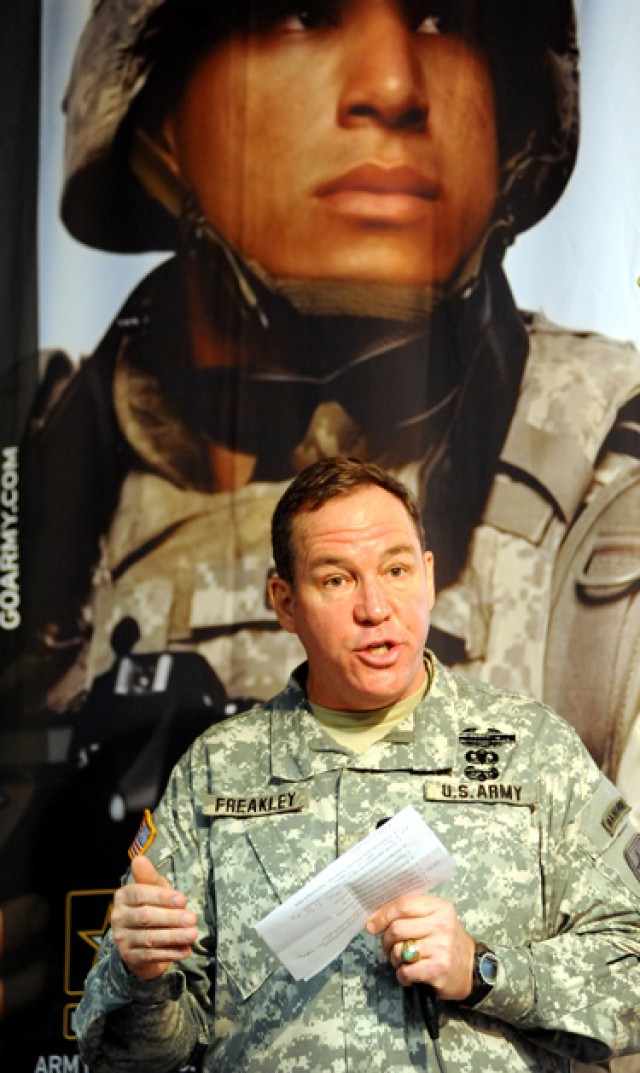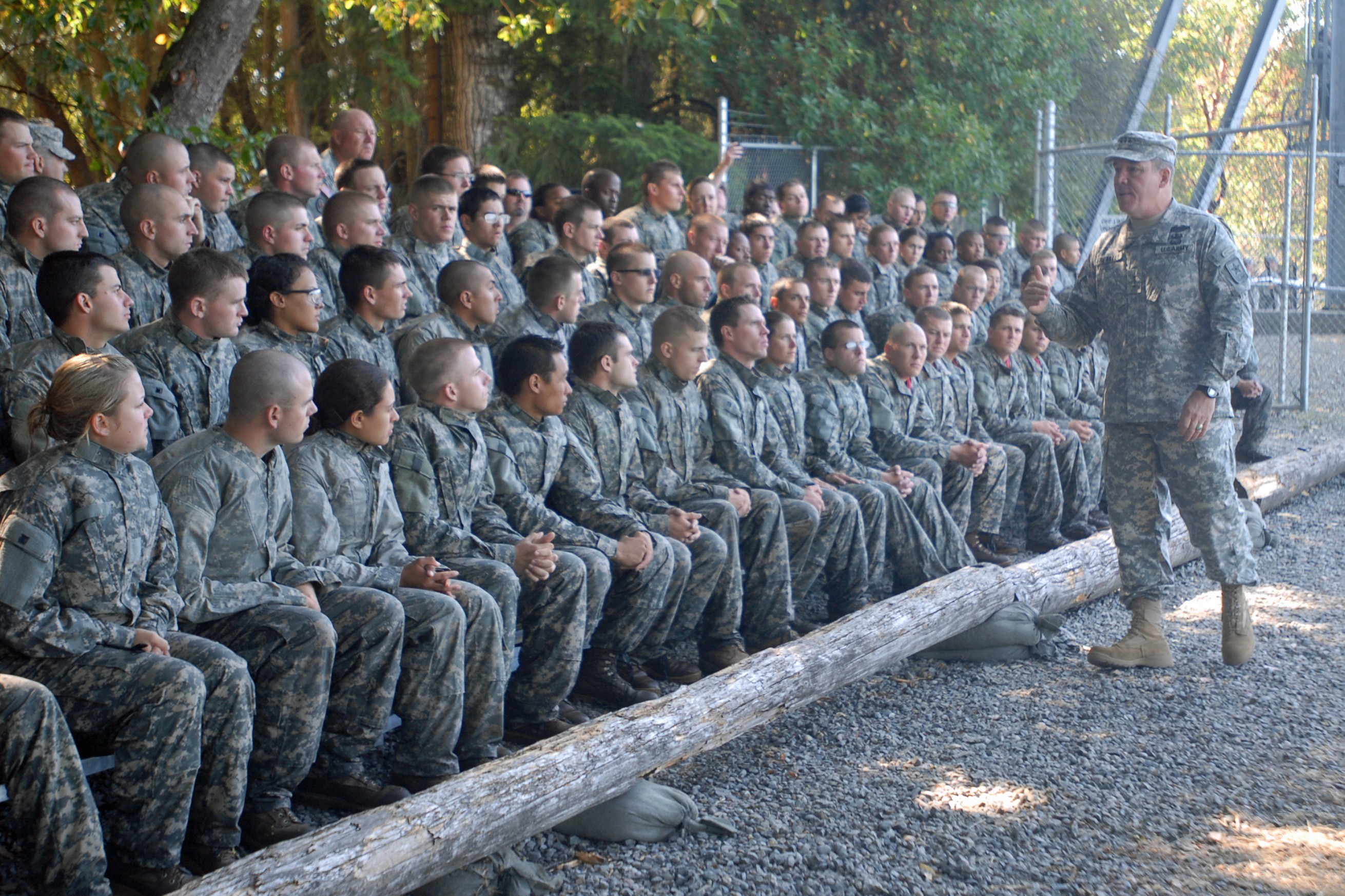WASHINGTON (Army News Service, April 20, 2011) -- U.S. Army Accessions Command will be inactivated as part of Defense and Army efficiency reviews, officials announced today.
The decision is a result of a comprehensive study to develop appropriate options for the alignment of commands that fulfill human resource functions, said Mark Davis, director of the Strategic Initiatives Group, Office of the Assistant Secretary of the Army for Manpower and Reserve Affairs.
"This decision will lead to the streamlining of the Army's accessioning process and will produce economic savings by de-layering the command structure without increasing the risk to the Army," Davis said.
In his memorandum to Secretary of Defense Robert Gates, Secretary of the Army John McHugh outlined five decisions:
-- Inactivating Army Accessions Command
-- Realigning Army Recruiting Command and Cadet Command under the Army Training and Doctrine Command
-- Continuing to align Human Resources Command under the Deputy Chief of Staff, G-1.
-- Establishing an Army Marketing and Research Group in Washington, D.C.
-- Retaining the Accessions Support Brigade at Fort Knox, Ky.
The realignment calls for establishment of an Army Marketing and Research Group, for national and corporate marketing and research, as a field operating agency to ASA (M&RA) in the Military District of Washington.
Additionally, the Accessions Support Brigade at Knox will be aligned to the Army Marketing and Research Group as a direct reporting unit, officials said.
Over the next year to 18 months, the Accessions Command inactivation is expected to create economic savings through manpower reductions, including the elimination of two general-officer and 65 other military positions, about 130 civilian positions, and 290 contractor man-years.
This action is not related to the 2005 Base Realignment and Closure reduction-in-force notices being given to Armor Center and School civilian employees at Fort Knox, officials said.
Within 60 days of the April 19, 2011, directive, Assistant Secretary of the Army for Manpower & Reserve Affairs Thomas R. Lamont will present McHugh a phased implementation plan addressing issues associated with the inactivation of Accessions Command.
"The plan will address specific timelines to achieve efficiencies during the inactivation of U.S. Army Accessions Command, which we believe will take some 12 to 18 months. This will ensure the orderly shutdown of the command and the adequate reorganization of its components," Davis said.
Accessions Command was activated at Fort Monroe, Va., on Feb. 15, 2002. It was originally chartered to better align accessioning and initial-entry training by subordinating Recruiting Command, Cadet Command and Initial Entry Training organizations under a single headquarters. The Initial Entry Training organizations were removed from Accessions Command after a few years.
Lt. Gen. Benjamin Freakley took over Accessions Command four years ago on May 18, 2007. On May 27, 2010, he assumed the additional role of senior commander at Fort Knox. Under BRAC, Accessions Command became the senior mission command at Fort Knox as it established the Human Resource Center of Excellence there.
Freakley also announced Tuesday his plans to retire.
Related Links:
STAND-TO!: 2010 Army Accessions Command Mission Success
Assistant Secretary of the Army for Manpower & Reserve Affairs - ASA (M&RA)




Social Sharing